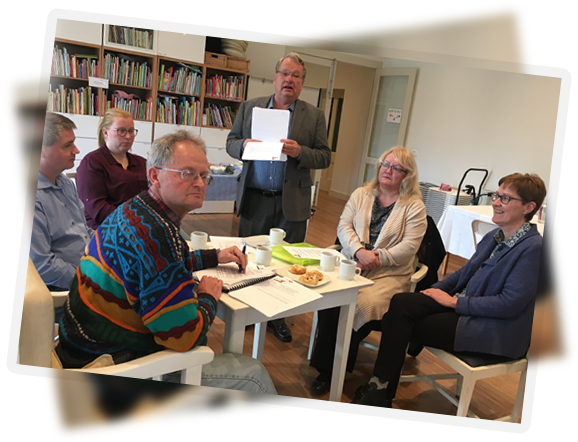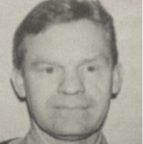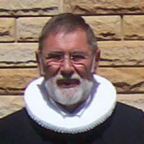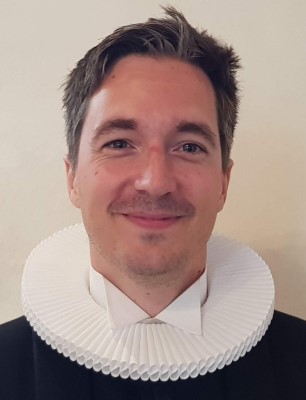

The church in Sydney has been the venue for several major events, ranging from the 2000 Olympics, to the inauguration of the church in Pennant Hills in 2002 and the visit of the Crown Prince Couple in 2005, to ‘Frederikskirken’ being named by King Frederik, then crown prince, in 2009.

One great whole: a pastor, a youth assistant, volunteers who, together with the church for worship services and friendly get-togethers, are the Danish church – Welcome here.
| Photo | Ministers | Year | Notes |
|---|---|---|---|
 |
Various lay preachers and German speaking ministers | 1874 – 1901 | Danish emigration to Australia begins – mainly from the area of South of Jutland, which became German Territory after the War in 1864. The first Danish Congregations are formed in Poowong East in Victoria and in Queensland. |
 |
Pastor Bjelke-Petersen | 1901 – 1907 | Sent to Australia by the Lutheran Church in New Zealand. |
 |
P. C. Ligaard | 1915 – 1923 | Sent from the Lutheran Seminary in the United States. The Church is built in Brisbane, but is closed in 1923-24 for financial reasons. Ligaard goes to Denmark to get support. |
 |
P. C. Ligaard | 1924 – 1960 | The work in Queensland continues. 1940: The Church is moved to Sydney (a rented Church in the middle of town). 1956: Toorak House in Melbourne is purchased by the Swedish Church. |
 |
Visiting ministers from among others, the Swedish Seamen’s Church in Melbourne | 1960 – 1978 | The Services are held at the Norwegian Seamans Church until it closes in 1978. |
 |
Visiting ministers from among others, the Swedish Seamen’s Church in Melbourne | Ca. 1978 – 1988 | The Scandinavian Church. The Services are held at Flying Angel House. |
 |
Viggo Herlufsen | 1981 – 1982 | The first minister sent by DKU. |
 |
Aage Schiøler | 1983 | |
 |
Bjørn Ohl | 1984 | |
 |
Viggo Herlufsen | 1986 – 1987 | The Services are held at Garnisons Church in Observatory Hill. 1987: Celebratory Service on the 1st of February for the Danish Queen Magrethe. |
 |
Folmer Johansen | 1988 – 1992 | 1988: A Minister’s House with a Church room is acquired in West Ryde. 1988: 28th of August the Danish Church is adopted. 1989: 3rd of September the Chief of the Girl Scouts and Princess Benedikte attend the Service at the Garnisons Church. Started to visit regulary Melbourne and Brisbane |
 |
Henrik True | June 1992 – December 1996 | |
 |
Torben Ebbesen | April 1997 – February 2005 | 2000: The Olympics / Paralympics, Services and Cafe Scandinavia 2002: The Church in Pennant Hills is acquired. 2002: 6th of October Celebratory Service and the inauguration. 2004: DSUK is created during the merging of the Danish Church abroad and the Danish Seamans Church in foreign Harbours. |
 |
Lars Skjødt-Jakobsen | February 2005 – May 2005 | Substitute 2005: 6th of March a celebratory service for Crown prince Frederik and Crown Princess Mary. |
 |
Jesper Engholm | July 2005 – December 2011 | 2009: 14th of October the Church in Pennant Hills was named: “Frederikskirken” by the Crown Prince Frederik. |
 |
Frede Tramm | January 2012 – October 2012 | Substitute |
 |
Bente Holdgaard | November 2012 – October 2019 | 2013: The Danish Church’s 25th birthday on the 28th of August is celebrated on the 1st of September 2013. |
 |
Anja Grønne Mathiassen | October 2019 – May 2024 | 2022: The Danish Church had a complete renovation of “Frederikskirken”, the Church Hall, and the office. 2023: New roof on the Craft room. |
 |
Christian Rønlev Berwald | November 2024 - Present | 2024: |




33-35 Hillcrest Road
Pennant Hills NSW 2120
Copyright © 2021 The Danish Church in Australia. All Rights Reserved. Website Design & SEO by SEO North Sydney